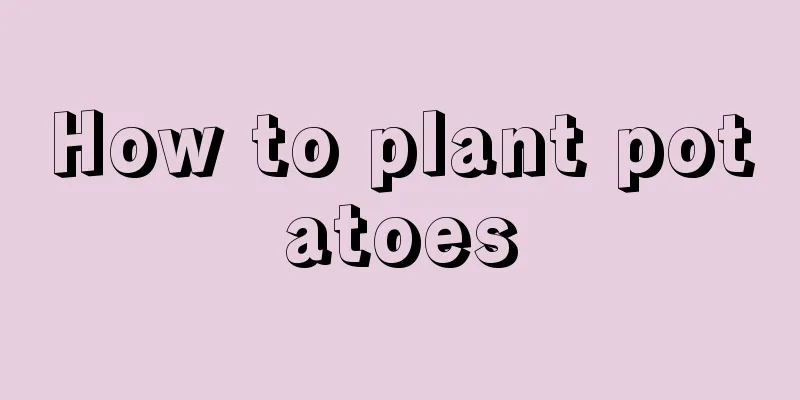How to plant potatoes

|
Potatoes , scientifically known as Solanum tuberosum, have become a widely grown crop around the world due to their drought and cold resistance and high yield. It is not only an important food crop, but is also often eaten as a vegetable with high nutritional value. Learn how to plant potatoes below. 1. Seed selection Selecting seed potatoes is the first step to ensure yield and profit. According to the local climate, potato varieties that are high-yielding, disease-resistant, of high quality and good taste should be selected to ensure that the seed potatoes are healthy and disease-free. 2. Cut into pieces and germinate Germination should be carried out in an environment with room temperature above 15℃. You can choose to use sand indoors or dig a hole outdoors. When the buds are 0.5 to 1.0 cm long, they are ready for sowing. 3. Site selection and land preparation For potato planting, you need to choose a plot with loose and fertile soil. Adopt the double-ditch planting method, dig furrows 7 to 10 days before sowing, irrigate and create moisture to prepare for sowing. 4. Planting seeds When sowing, determine the direction of the seedlings according to needs. Potatoes sown upwards have short roots, high yields but small sizes, and emerge early; potatoes sown downwards have long roots, low yields but large sizes, and emerge late. 5. Seedling management If you use ground film for covering, you need to break the film when the seedlings are exposed to the soil to let in air and avoid steaming the seedlings. When the seedlings are 10 cm tall, compact the edges of the film to retain water and suppress weeds. 6. Water and fertilizer management Control watering before potatoes bloom, water every 10 days in rainless weather, and stop irrigation 10 days before harvest. Potatoes like farmyard manure. Apply 4,000 to 5,000 kilograms per mu, mix it with the soil and then till it. Add microbial plant health conditioning liquid to the first watering after flowering, 3 kg per acre. 7. Pest and disease management Potatoes are susceptible to 35 diseases and 25 pests, including late blight, downy mildew, bacterial wilt, soft rot, as well as golden nematodes, beetles, twenty-eight-spotted ladybirds, large and small cutworms, and peach aphids. Control diseases and insect pests in a timely manner to prevent losses in production. The above is the potato planting technology. If you want to achieve high potato yields, it is important to understand the planting steps and methods clearly. Everyone is welcome to leave a message and share your experiences.
|
>>: Environmental requirements for planting Chinese medicinal materials
Recommend
How to grow Daphne
1. Selection of potting soil The flowerpot should...
Advantages and Disadvantages of Coral Jelly Rose
The coral jelly rose has lovely coral pink flower...
Is it better to use a large pot or a small pot for the Kylin palm? What kind of flower pot is suitable for the Kylin flower?
Euphorbia is a kind of succulent plant, which bel...
As the weather turns cold, be careful when growing flowers indoors
Things to note when growing flowers indoors Don’t...
If you water the money tree like this, it will not only not die, but also keep it green.
1How often should I water the fortune tree? The m...
Where do geese grow without eating grass? Where and what is the growth environment of geese without eating grass?
What does a goose that doesn't eat grass look...
Time and method of changing soil for Amaryllis
Time to change the soil of Amaryllis It is best t...
How to grow primrose
1. Temperature It has very high temperature requi...
How many kilograms of cantaloupe are usually produced per mu? How to plant cantaloupe to achieve high yield?
Muskmelon yield per mu Muskmelon is a fruit that ...
Do potted grapes need to be watered in winter? How to maintain them in winter
1. Do you need to water in winter? Whether potted...
How long is the growth period of Tremella fuciformis?
Introduction to Tremella Growth Wild Tremella has...
Can Liubeili be planted in the ground?
Can six times the profit be planted in the ground...
Does the thousand-year-old tree prefer shade or sun?
Does the thousand-year-old tree prefer shade or s...
How to prune gardenias
1. Early winter pruning Gardenias need to be prun...
Is the goldfish plant suitable for a large or small pot?
Should I use a large or small pot for the goldfis...









